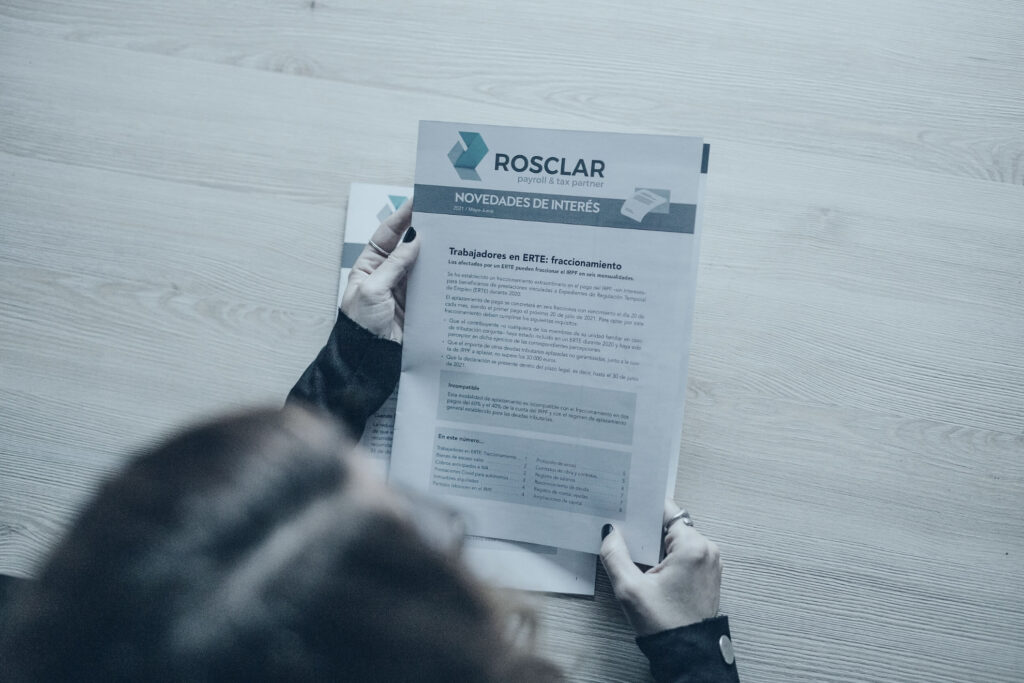In this case study, our legal department presents a ruling which addresses a very important matter. That of establishing whether the images captured by a camera installed without the knowledge of the worker are valid for the purposes of proving the breaches described in a letter of dismissal.
1. The facts:
A worker provides services as a home help, caring for a person with limited mobility. One day, the husband of the latter realises that several pieces of jewellery and 30,000 euros are missing from a safe deposit box situated in his wife’s bedroom and he reports the matter to the police. The family suspects this worker employed as a home help, since the other two persons who would come into the home were always with the woman, assisting her at all times, and the home help was the only person who would remain alone in the house in order to clean.
Acting on their suspicions, the family decides to install a surveillance camera focused directly on the wardrobe. When they check the recorded images, the family sees the home help kneel in front of the wardrobe, remove a cover which hides the safe deposit box and try to open it with a key, which she is unable to do, since it required a combination. It is important to emphasise that the worker was not informed either implicitly or explicitly about the installation of this camera, nor even by means of signage.
As a consequence of these images, she is dismissed, whereupon she is given a letter in which all the facts described are outlined, in particular those relating to what was recorded with the camera installed in the room. The worker contests the dismissal, and although the court rejects her complaint, the High Court of Justice of the Principality of Asturias upholds her appeal and rules that she has been unfairly dismissed. The main reason for this ruling is the invalidity of the images recorded with the camera installed without her knowledge, which made it impossible to prove the facts on which the dismissal was based, and so the dismissal was declared to be unfair.
The company (in this case, the woman who receives care in her home) contested this ruling in the Supreme Court, alleging, fundamentally, that the images should be valid and, therefore, admitted as evidence.

2. The ruling:
The Supreme Court concludes that the images are admissible despite the fact that the worker had not been informed about the installation of the cameras, which is precisely one of the requirements (both in law and case law) for these images to be valid. The grounds on which this conclusion is based are the following:
(a) There was a serious justification for the covert surveillance, since it was clearly suspected that the worker could have stolen 30,000 euros and pieces of jewellery. In other words, there was a clear reason for the existence of the installation, given that there were very well-founded suspicions: the worker dismissed was the person who had keys to the house and she would often remain alone in the house to clean.
(b) The camera only focused on the wardrobe where the safe deposit box was, without recording any other area of the home or even any other part of the room.
(c) Given the characteristics of the case, it was indeed impossible for the specific signage established in data protection legislation to be put in place.
(d) Although it is possible that the legislation on data protection is infringed, this should not affect whether or not the evidence will be valid in dismissal proceedings.
(e) In the event that this evidence were deemed invalid, the company (the woman who receives care in her home) would be left without the opportunity to prove such a serious breach and to identify the person(s) responsible for it. In this case, the Supreme Court considers that there was no other way to prove these circumstances. Therefore, the evidence was not only appropriate (that is to say, it served to prove what occurred and who was responsible), but it was also necessary (since there were no other means that were less intrusive) and proportional, insofar as the capture of images is reduced to the bare minimum.
(f) Furthermore, it considers that if the signage had been put in place or the worker had been informed, the attempt to prove the breach and identify the person(s) responsible would have been thwarted.
Thus, in view of the circumstances of the particular case (the well-grounded suspicions; the appropriateness, need for and proportionality of the installation; the specific conditions of the job; as well as the fact that providing the information would have prevented the opportunity to prove the breaches of the worker), the Supreme Court concludes that the general rule consisting in providing workers with information may be waived if the installation of the cameras is ad hoc, adjusting the generic obligations to the particular case, and in very specific circumstances.

3. Advice in view of the ruling:
Given the pronouncement of the Supreme Court, Rosclar’s legal department would offer the following general advice:
(a) The general rule is that workers need to be informed about the installation of a video surveillance system and that this system will be valid provided that (i) it is specified that the purpose of the recording is to check that working obligations are met; and (ii) that the images may be used for disciplinary reasons.
Nevertheless, several rulings (for example, the ruling of the Constitutional Court of 3 March 2016, the ruling of the Supreme Court of 7 July 2016 and the ruling of the Supreme Court of 21 July 2021) have deemed the information provided through the installation of signage established in the data protection legislation and in Instruction 1/2006 of the Spanish Data Protection Agency to be sufficient in the case of a blatant unlawful act. Therefore, companies should always provide their workers with information about the installation of cameras, if they subsequently wish to use the images to prove work-related breaches.
(b) The means used must be appropriate (that is to say, useful in providing proof of breaches), it must be necessary and proportional (in the sense that there is no other less intrusive means for achieving the purpose). Therefore, the installation of cameras must be done meticulously, for if these three requirements are not met, the images will not be valid. At all events, it is only permitted to film places that are relevant from a work perspective and, of course, it is not admissible to film places in which the intimacy and privacy of the workers may be violated.

(c) The general rule is only waived in very particular and specific cases in which there is a clear and reasonable suspicion of a breach and the cameras serve to prove said breach has occurred and who is responsible, and where, if the information were to be provided, the opportunity to prove these circumstances would clearly be thwarted. It may never be a permanent surveillance system, and so it must only be present for a period of time that is essential, necessary and proportional. A further requirement is that, due to the special characteristics of the place, it is not feasible to put up signage of the type established by data protection legislation.
(d) It is recommended to inform workers at all times and to only install cameras without informing them in very specific and particular cases, and always for a period of time that is essential. In other words, resorting to this action is highly unusual and its validity will depend on the special circumstances of the case.
(e) It should be underlined that the worker could allege the violation of his or her fundamental rights, since this legislation is closely linked with the fundamental right to protection of personal data, which may lead to additional claims from workers.
If you wish to read the ruling in full, you will find it here. Should you have any inquiry and/or need any advice, we will be delighted to assist you here at Rosclar.

